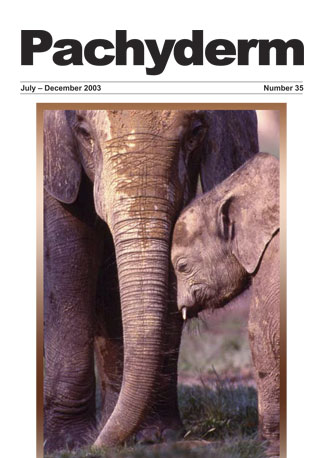Physiological and haematological fundings in immobilized free-ranging African elephants
Abstract
Reviews results found during the monitoring of physiology and haematology attributes of 56 elephant (26 adults, 14 subadults and 16 juveniles) captured in Ol Pejeta Ranch in Laikipia and transferred about 250 kms to Meru NP in July 2002. 9 bulls and 7 family groups were involved, and 51 of the 56 animals survived the transfer. The elephant were anaesthesized with a mixture of etorphine HCI (M99) and hyaluronidase. Drug monitoring records were assessed according to three age groups adults, subadults, and juveniles. Darting of the adults and subadults was done from a helicopter while the calves were darted from ground level. 'Results of this study show that most physiologic parameters are different in the 3 age groups of elephants. Respiratory rate and pulse rate was significantly different between adults and juvenile and between juveniles and subadults with the juveniles having the highest and the adults the lowest as is also the case in body temperature. 'This is attributed to the high metabolic rate in young animals'. Mean corpuscular value and haemoglobin were highest in adults and lowest in juveniles while white blood cells count was significantly higher in juveniles than in adults. 'The range for haematological parameters compared well with those reported by other authors except for the white blood cell counts', but actual data is difficult to compare because other authors rarely recorded the age groups separately.
Downloads
Published
How to Cite
Issue
Section
License
Copyright (c) 2003 Francis Gakuya, Elizabeth Wambwa, David Ndeereh, Thomas Manyibe

This work is licensed under a Creative Commons Attribution-NonCommercial 4.0 International License.




